When pupils and staff return to school in September, a new computing curriculum will begin. Jon Chippindall, a Year 5 teacher working in Manchester, discusses how teachers can make the most of the new setup.
[As seen in the February 2014 edition of our magazine]
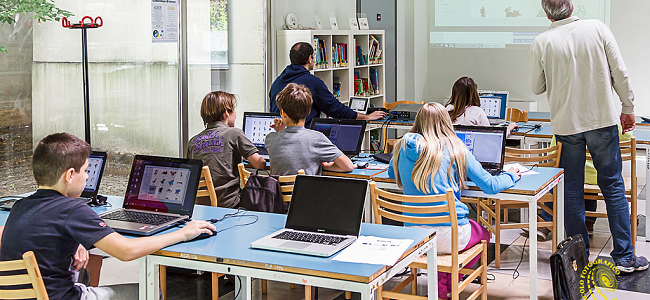
As the countdown to computing continues, primary schools across the country are considering how best to redesign their ICT curriculum to incorporate the computer science elements of the new national curriculum, whilst maintaining valuable aspects of ICT.
BYOD schemes and 1:1 learning are getting steadily more popular, and one concern that comes with these ideas is wireless stability. Should a certain number of pupils in a class have trouble getting their tablet connected to the internet, how much would this change the lesson? Industry expert Steve Buet discusses the absolute importance of a great wireless network.

A reliable wireless network is becoming a must have for schools in the UK, but many are still woefully inadequate. As more teachers begin to embrace wireless devices such as laptops and tablets for use in the classroom, an increasing number of schools are finding that their poor wireless coverage is hindering the use of technology in lessons and that new equipment is going unused.
In the last few years the average number of wireless devices has increased from one or two, to three or five per user, and these figures are being reflected in the classroom. It has been predicted by the British Education Suppliers Association (BESA) that almost a quarter (22%) of ‘pupil facing computers’ will be tablets by the end of 2015. However, as the number of wireless devices increases, so too does the demand for the infrastructure to support it, which many schools are worryingly still without.
Given how coding has ruled the headlines in recent months, most teachers are discussing the pros and cons of the matter. Peter Mason, an avid computing enthusiast, discusses why he considers the changes to be positive.

Unless you've been hiding under a rock for the past year, you won’t have missed the changes to the National Curriculum that are taking place. These changes include a controversial shift in focus from ICT to computing. Starting from September this year, the National Curriculum will emphasise on empowering pupils to be the next generation of creators - not just passive consumers. The means to achieving this is teaching children to code.
The controversy hasn't stopped at the National Curriculum. The Government has recently put its weight behind the Year of Code campaign, with a launch that appears to have been criticised by everyone from educators to businesses. Myths abound on what programming is and isn't at the moment, but one fact is that computer programming isn't for everyone, just like art isn’t. There are, however, some great reasons to teach kids to code.
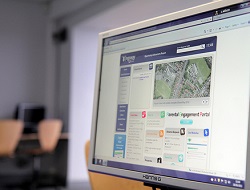
Developing an Acceptable Use Policy (AUP) for ICT should include usage of school-based equipment, both wired and wireless networks and infrastructures, for both BYOD and BYOA.
Establishing an overall policy framework for electronic communications should recognise the convergence of communications functions and services.
It should also clarify the applicability of law and other school policies such as data-protection, safe-guarding, health and safety and computer misuse.
Drawing from his experience as a Headteacher, Mark Steed describes the main impacts that ICT and the internet is having on education in schools, from the benefits of 'anywhere, anytime' learning and increased student collaboration, to the burdens of keeping students safe online and regulating access to the internet.
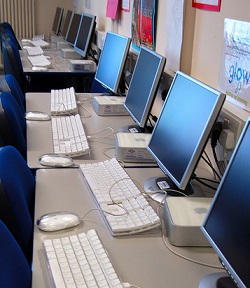
Great claims have been made over the past twenty years about the impact that ICT would have on teaching and learning, most of which only succeeded in disappointing.
However, at long last, the combination of reliable ICT networks, affordable equipment, innovative educational software and an increasingly ICT-literate body of teachers means that we are beginning to see ICT making a real difference to the day-to-day education in independent schools.
The impact of new technologies is being seen in every area of school life: academic, pastoral, co-curricular and in school administration.
Martini Learning - Widespread access to new technologies has been one of the most important catalysts of the shift in emphasis from classrooms being about teaching, to them being about learning.
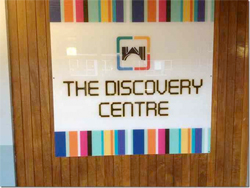
Here’s a picture of the original ICT suite, complete with rows of desktop computers and an obligatory interactive whiteboard at the front. The senior management team felt that the suite didn’t properly represent the school’s creative ethos, didn’t reflect our vision of learning, and wasn’t capable of delivering the future curriculum needs of our pupils.
So we started gathering ideas from pupils about what ‘future learning’ might look like and what they needed to make it happen. We asked staff about what they thought was needed to teach a future curriculum and did a lot of research! Most of the ideas pointed to a place that combined research, books, science, technology and computing. A place where several activities could happen at once - a science experiment, building a robot, finding out about asteroids or just reading a book. A ‘movable’ place where everything could be easily moved - technology, furniture and resources. A place large enough to teach a whole class, comfortable enough to learn with a small group and snug enough to learn in private.
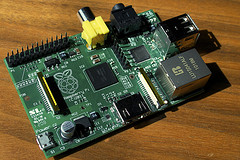
Much has been said about the Raspberry Pi and its usefulness as a tool for learning. The long waiting lists and competitive price of the Pi have created widespread euphoria. However, as all the excitement dies down, and people begin to receive their Pi, many critics have appeared asking how useful is the Pi?
Many critics and blog posts are comparing it to the iPad, which is futile as they are polar opposites. The Pi was developed as a tool to invoke learning, not as a wow piece of technology. The Pi is for content creation as opposed to content consumption. It is not the physical Pi that is the exciting technology - you don’t purchase it because of its processor speed, graphics ability or even its size - its fundamental strength is as a vehicle to develop students' computing competence and understanding.
Photo credit: Roo Reynolds

It is widely recognised that showcasing the work of students, and giving them an online audience, is a brilliant way of empowering students. Pete Jones’ call to arms in his post “Judging a book by its cover: Ideas and thoughts on how learning is displayed in schools“, powerfully makes the case for how he would like work to be shown around his school. Showcasing work helps improve students' confidence, and makes them work harder to refine their work as high-quality as possible, given they are going to have a wider audience. Some fantastic examples of students' work showcased online can be seen at High Tech High, San Diego, CA in this post by @JamiePortman. The way that they showcase their students' work, and the work that is on display, is phenomenal. How can we translate that to the display of work made by students in ICT lessons?
ICT is a subject where it is particularly difficult to put work on the walls without printing it off. This is fine if it is static work, such as a graphical design, a magazine cover, or a piece of writing. However, problems occur when you’re dealing with interactive work - videos, animations, websites, games, etc. How do you showcase these things in a clear and visible light? One way is through the procurement of plasma screens around your department and school - this is a fantastic idea and many schools do this. However, when you regularly want to showcase the work of hundreds of students, schools cannot afford to purchase so many screens to facilitate this. So how do you make it work?

When a school district adopts a 1:1 technology programme, no matter whether the district itself is purchasing the computers or is instead asking the students and their families to purchase a device (or bring one from home), one of the critical concerns that arises is how to keep those devices safe and operational for years to come. Theft, devices being lost, and devices breaking (by being dropped, for example) are all legitimate concerns. While some of these issues can be prevented or reduced somewhat by teaching students some basic safety techniques (such as keeping devices safely locked up when unattended), districts should also plan on purchasing insurance to protect their investment in 1:1 technology. Here are two key reasons why school districts should elect to insure students’ technology devices, along with some thoughts about what parents can do if their child’s school does not insure 1:1 devices.

A community-driven platform for showcasing the latest innovations and voices in schools
Pioneer House
North Road
Ellesmere Port
CH65 1AD
United Kingdom